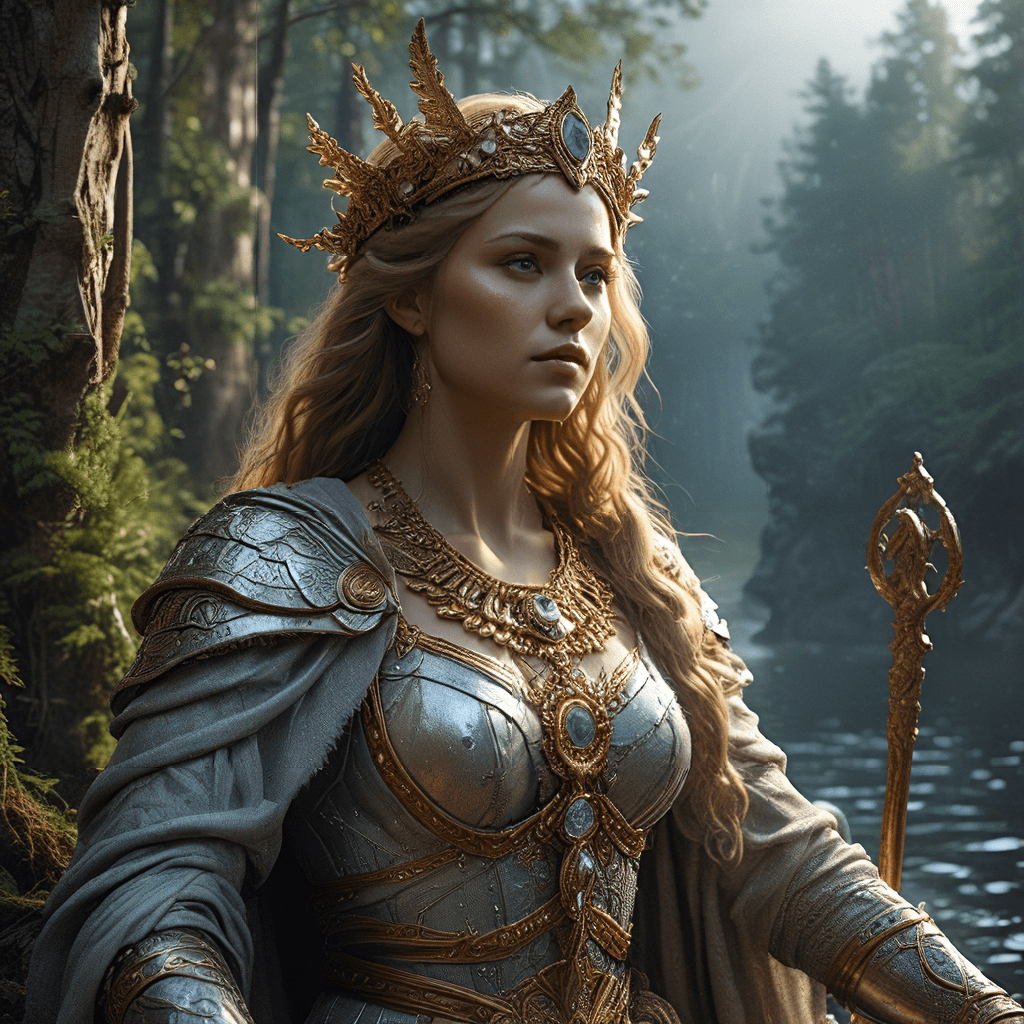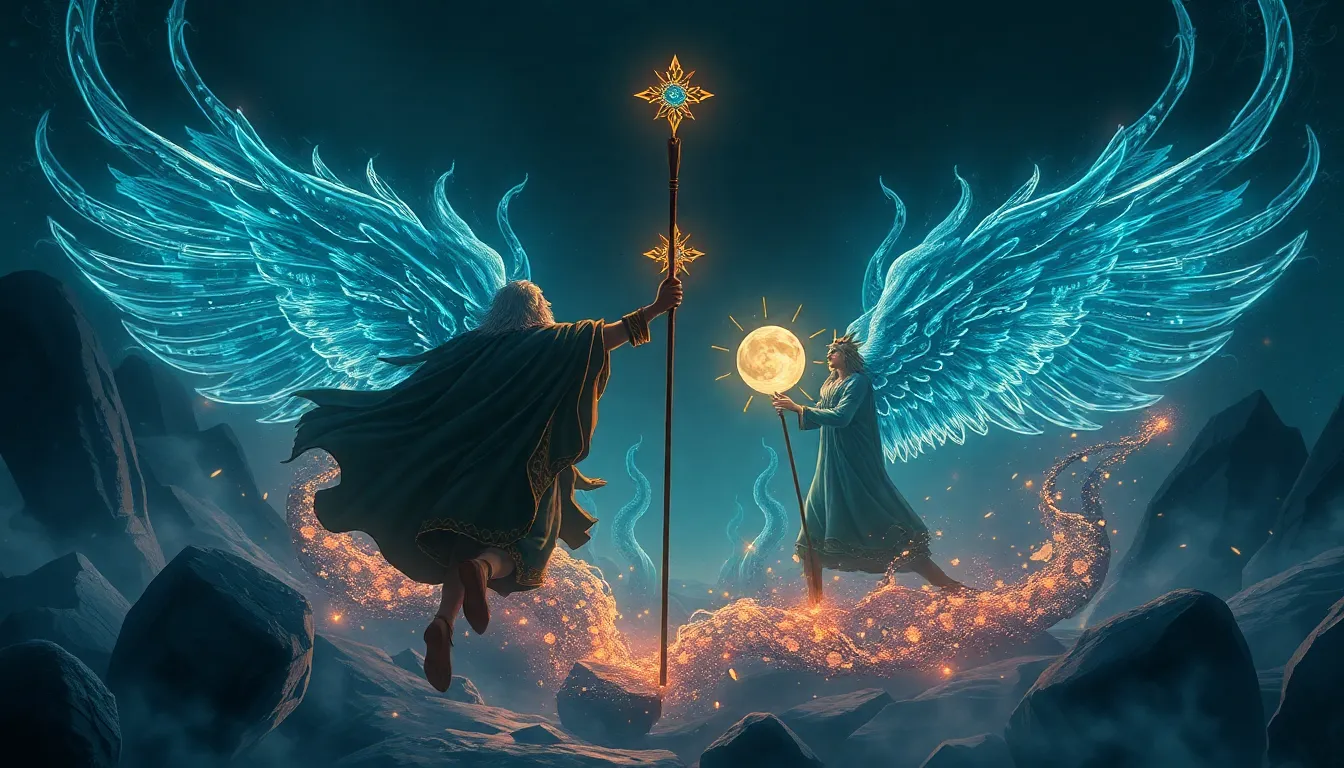The Enigmatic Deities of Baltic Mythology Unveiled
The Baltic region, encompassing countries like Lithuania, Latvia and Estonia, boasts a rich and vibrant tapestry of mythology that intertwines stories of nature, spirituality, and the human condition. Unlike its more famous Greek or Norse counterparts, Baltic mythology holds a unique charm, often shrouded in mystery and a sense of the ancient. It is a world where gods and goddesses walk among mortals, where forests whisper secrets, and where the very fabric of existence is woven from a delicate balance of forces.
A Tapestry of Nature and Spirituality: Introduction to Baltic Mythology
Baltic mythology, with its roots deeply planted in the natural world, offers a fascinating glimpse into the beliefs and rituals of a people closely connected to their environment. Unlike the neatly defined pantheons of other cultures, Baltic mythology is a fluid and ever-evolving tapestry of beliefs, woven from a multitude of deities, spirits, and mythical creatures. The Baltic people believed that every aspect of nature, from the roaring storm to the whispering wind, held a divine presence. Their gods were not distant, residing on lofty Mount Olympus, but rather intimately connected to the everyday world, influencing their lives in all aspects, from planting and harvesting to war and love.
The Divine Hierarchy: From Sky Gods to Earth Spirits
The Baltic pantheon, while diverse, can be broadly understood as a hierarchy of deities, each with their specific domain and influence. At the top stood the sky gods, powerful figures who commanded the forces of nature. These included Dievas, the supreme sky god, and Perkunas, the god of thunder, lightning and warfare. The earth itself was ruled by Žemyna, the earth goddess, who embodied fertility and creation. Beyond the realm of the gods existed a vast array of lesser spirits, each associated with specific elements, places, or phenomena. These included spirits of the forest, water, and the home, each playing a vital role in the delicate balance of the natural world.
Jõulumäe: The Sacred Mountain and its Deities
Jõulumäe, or "Christmas Mountain," was a significant sacred site in Baltic mythology. Legend tells of a mountain, possibly located in what is now Estonia, where several important deities resided. This mountain, often depicted as a gateway between the human world and the realm of the gods, was a place of pilgrimage and ritual. Although the precise location of Jõulumäe remains a mystery, its significance in Baltic mythology and its association with deities such as Velnias, the trickster god, and the powerful earth goddess Žemyna, highlight its importance in the cultural landscape of ancient Baltic societies.
The Cult of Perkunas: The Thunder God and His Role in Warfare and Weather
Perkunas, often depicted as a powerful warrior wielding a thunderous hammer, stands as one of the most prominent figures in Baltic mythology. As the god of thunder, lightning, and warfare, he commanded the elements, bringing both blessings and devastation. His wrath was feared, but also respected, as he was seen as a protector of the people and a bringer of justice. The cult of Perkunas, with its elaborate rituals and sacrifices, played a crucial role in ancient Baltic society, seeking to appease the powerful deity and ensure his favor.
The All-Mother: Žemyna and her Role in Creation and Fertility
Žemyna, the Earth Goddess, is a powerful figure in Baltic mythology, embodying the very essence of the earth and its life-giving force. She is often depicted as a nurturing mother, representing fertility, growth, and abundance. Žemyna, also known as Žemės Motina (Mother Earth), played a vital role in the creation of the world and the well-being of all living things. She was responsible for the fertility of the land, the bounty of harvests, and the cycle of life and death. The people relied on her favor for prosperity, and paid homage to her through various rituals and offerings.
Žemyna's connection to the earth was profound. She was believed to reside within the soil itself, nurturing the seeds and guiding their growth. She was also associated with the natural world, particularly with the forests, lakes, and streams. She was often invoked in prayers and rituals related to agriculture, ensuring good harvests, protection for livestock, and the health and fertility of the people.
The reverence for Žemyna was deeply interwoven with the agricultural practices of the Baltic people. Rituals were performed at the beginning of each planting season, seeking her blessings for a bountiful harvest. Farmers would offer sacrifices, usually in form of grain, fruits, or animals, to appease the Earth Goddess and ensure her favor. After the harvest, festivals were held to celebrate Žemyna's generosity and thank her for the abundance she provided.
The Trickster God: Velnias and the Dark Humor of Baltic Mythology
In the tapestry of Baltic mythology, Velnias, the trickster god, adds a layer of mischievous wit and dark humor. Often depicted as a cunning and cunning figure, Velnias represents chaos, temptation, and the darker aspects of human nature. He is not necessarily evil, but rather a mischievous spirit who delights in playing tricks on mortals and challenging the established order.
Velnias is often portrayed as a cunning manipulator, using his wit and charm to lure people into traps or lead them astray. He is known for tempting people with earthly pleasures, whispering doubts and fears in their ears, and ultimately sowing discord and chaos. He is a master of disguise, able to transform himself into various forms to deceive and confuse his victims.
Despite his mischievous nature, Velnias also plays a role in the balance of the universe. He is a reminder of the darker aspects of human nature, and the constant struggle between good and evil. His presence serves as a cautionary tale, urging people to stay vigilant against temptation and to always strive for virtue. The stories surrounding Velnias are often infused with a dark and humorous tone, reflecting the Baltic people's acceptance of the duality of life and the inherent presence of both good and evil in the world.
The Afterlife: The Domain of the Dead and the Journey to the Otherworld
Baltic mythology features a rich and intricate understanding of the afterlife, a realm known as a "pasaulis" or "antapasaulis." This realm, often seen as a mirror image of the world of the living, is populated by the spirits of the deceased and ruled by deities who govern the fate of souls after death. The journey to the afterlife was a perilous one, fraught with dangers and trials.
The Baltic people believed that upon death, the soul would embark on a journey to the otherworld. This journey was often described as a crossing of a river or a journey through a dark and mysterious forest. Along the way, the soul might encounter various mythical creatures, like the "vepšys," a fearsome wolf-like creature guarding the entrance to the otherworld, or the "laumė," a spirit associated with fate and destiny.
The afterlife itself was a complex and multifaceted place, with different regions reserved for different types of souls. Some souls were believed to be eternally happy, while others were condemned to a state of suffering. The fate of the soul was often determined by how they had lived their life on Earth and the actions they had performed. The souls of those who had lived virtuous lives were welcomed into the realm of the dead, while those who had committed wrongdoing were destined for punishment.
The Enduring Influence: Baltic Mythology in Modern Culture and Folklore
The rich tapestry of Baltic mythology continues to exert a profound influence on modern culture and folklore. The stories, myths, and beliefs that have been passed down through generations are still alive in contemporary art, literature, music, and even everyday life.
Many Baltic folk tales and legends are still recounted today, often with variations that have evolved over time. These stories serve as a reminder of the ancient beliefs and values of the Baltic people, and offer insights into their worldview. The imagery and themes found in Baltic mythology have inspired artists, writers, and musicians, who incorporate them into their works.
In the modern world, Baltic mythology continues to be a source of inspiration and fascination. The captivating stories, the powerful deities, and the rich cultural heritage all contribute to the enduring legacy of Baltic mythology. From traditional folk songs to contemporary art installations, Baltic mythology remains a vital part of the Baltic identity, forging a connection between the past and the present.
Theories on the Origins of Baltic Mythology: Indo-European Connections and Unique Developments
The origins of Baltic mythology are deeply intertwined with the broader Indo-European cultural heritage. Scholars believe that many of the themes, deities, and mythical figures found in Baltic mythology share roots with other Indo-European cultures. The concept of a sky god, the presence of a trickster, and the journey to the afterlife are all common features found in various Indo-European mythologies.
However, Baltic mythology also features unique elements that distinguish it from other Indo-European mythologies. The prominent role of nature in Baltic beliefs, the emphasis on fertility and agriculture, and the specific pantheon of deities, including figures like Žemyna and Perkunas, demonstrate the unique development of Baltic mythology.
Scholars continue to study and explore the origins and evolution of Baltic mythology, seeking to understand the influences that shaped its development and its lasting impact on Baltic culture and identity. Examining the similarities and differences between Baltic mythology and other Indo-European mythologies sheds light on the complex tapestry of cultural exchange and the unique paths that each culture has taken in shaping its belief systems.
FAQ
Q: What are some of the most important deities in Baltic mythology?
A: Some of the most important deities in Baltic mythology include Dievas (the supreme sky god), Perkunas (the god of thunder and lightning), Žemyna (the earth goddess), and Velnias (the trickster god).
Q: What is the significance of the sacred mountain, Jõulumäe, in Baltic mythology?
A: Jõulumäe, or Christmas Mountain, is a significant sacred site, often depicted as a gateway between the human world and the realm of the gods. It is associated with deities like Velnias and Žemyna.
Q: How does Baltic mythology reflect the relationship between the Baltic people and nature?
A: Baltic mythology is deeply rooted in the natural world. The beliefs and rituals of the Baltic people were closely connected to their environment. Every aspect of nature, from the roaring storm to the whispering wind, was believed to hold a divine presence.
Q: What is the enduring influence of Baltic mythology on modern culture and folklore?
A: The stories, myths, and beliefs of Baltic mythology continue to influence modern Baltic culture and folklore. They are found in art, literature, music, and everyday life.




